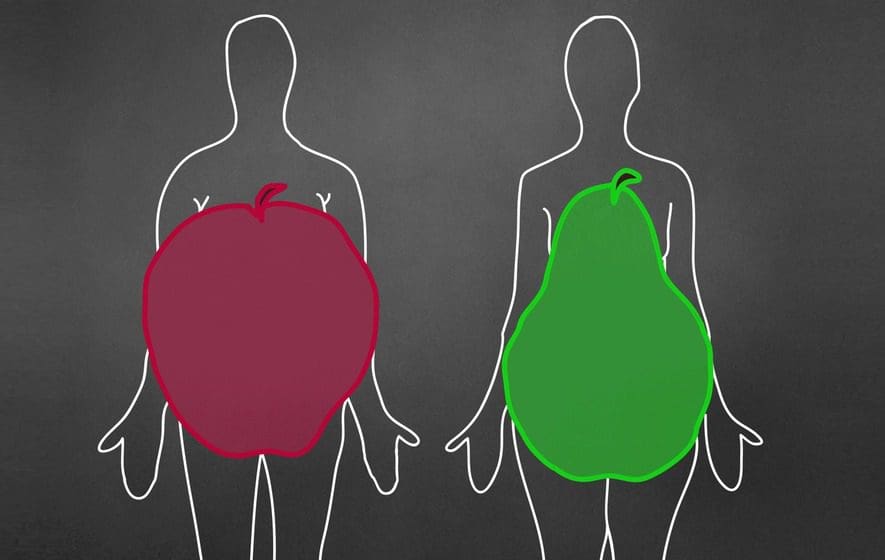Health Coaching
Health Coaching involves a mentor and wellness practitioner that supports and helps individuals reach their optimal health and feel their best through a customized food and lifestyle program that meets their unique needs and goals.
Health coaching does not focus on one diet or way of living.
Integrative Nutrition Coaching focuses on:
- Bio-individuality meaning we’re all different and are unique
- Diet
- Lifestyle
- Emotional needs
- Physical needs
It emphasizes health beyond the plate and wellness through primary food. However, at the core is the idea that there are areas that impact health just as much as food. This means that:
- Relationships
- Career
- Spirituality
- Physical activity
All contribute to overall well-being.
There is no one-size-fits-all approach to health and wellness.
These professionals work with clients and teach them how to:
- Detox their bodies
- Fuel their bodies
- Maintain their bodies
This leads to individuals becoming the:
That they can be!
Health Coaching offers services in private one-on-one sessions and group coaching.

by Dr Alex Jimenez DC, APRN, FNP-BC, CFMP, IFMCP | Chiropractic, Diets, Functional Medicine, Gut and Intestinal Health, Health, Health Coaching, Integrative Functional Wellness, Integrative Medicine, Ketogenic Diet Explained, Natural Health, Nutrition, Supplements, Weight Loss
Today, there can be a lot of confusion when it comes to diet. The information received can be contradicting, confusing, and leave individuals feeling lost. This can often result in giving up on the diet and being left with joint pain, inflammation, discomfort, headaches and more.
The reason why there is more than one diet out there is because the research is always advancing. We have come to realize that everyone’s body reacts to different food sources and diets differently.
Genetic Code
As more and more research is being done, the more we are realizing how the genetic factor of individual cells directly correlate to a patient’s weight, diet, and changes as they age. For years, as one would get older and start gaining weight, we would attribute it to age. Although age is a factor, what we are finding now is that the genes are actually changing as we age and that is what creates this weight gain.
Sure enough, there are also genes that will tell us if you are susceptible to snacking. These genes can detect if you have a predisposition for heightened snacking or satiety. Satiety is the feeling of fullness after a meal. If you have reduced satiety, you tend to snack more because you do not feel as full after the meals you eat.
Getting your genes tested will allow the treatment plans created to be more personal and more geared to see results! Believe it or not, your genes can tell us if you are genetically prone to obesity,� if you have weight loss resistance when it comes to carbohydrates, and how your body responds to exercise! Using the genes, we can see how many hours per week you will need for weight loss or to maintain your current weight.
Proven Methods
The best option is to know your genes so the diet plan can be geared more towards you directly. However, if that is not a possibility right away, there has been one diet that has been proven time and time again to work for almost everyone. This diet is referred to as the Ketogenic Diet.
In simple terms, the ketogenic diet is a low carb, high-fat diet. This diet works by sending the body into a state of ketosis which burns fat as fuel.
Research shows that those using a ketogenic diet demonstrated a higher percentage of weight loss and kept the weight off longer when compared to those who did a low-fat diet.
Available Resources
Considering the fact that there is misinformation about diets out there, proper education is going to be the key. As someone who has gone through dietary changes myself and figuring out what works best with my body with type 1 diabetes for optimal health, the right team is what made me successful.
Surround yourself with those who are continuously educating themselves and have a system in place. For example, we make sure our patients get one on one time with the doctor and a health coach. From here, the health coach and patient become connected through a virtual database allowing the patient’s food, weight, supplements, hydration, BMI, BIA, and activity to be tracked by the health coach. The health coach can then instant message or video chat the patient throughout the week to ensure they are staying on track, staying motivated, and answer any questions they may have!
Do not be left confused over diets anymore! Remember that your genetic code holds the key to the right diet for you.
The right diet has the ability to make individuals see the results they have been waiting for. It all comes down to the genes. As mentioned, genes change over time but they hold the code. If you are someone who has struggled with diets, feeling good, or are stuck at a certain weight, I highly recommend getting tested! The information you gain from this is so beneficial! I have seen the results first hand, and they are eye-opening. They let you know if you have the genetics that will hold onto fat. This knowledge can help us prevent health issues such as metabolic syndrome! – Kenna Vaughn, Senior Health Coach�
Dr. Alex Jimenez�s Blog Post DisclaimerThe scope of our information is limited to chiropractic, musculoskeletal, and nervous health issues or functional medicine articles, topics, and discussions. We use functional health protocols to treat injuries or disorders of the musculoskeletal system. Our office has made a reasonable attempt to provide supportive citations and has identified the relevant research study or studies supporting our posts. We also make copies of supporting research studies available to the board and or the public upon request. To further discuss the subject matter above, please feel free to ask Dr. Alex Jimenez or contact us at 915-850-0900.
REFERENCES
Bueno, Nassib Bezerra, et al. �Very-Low-Carbohydrate Ketogenic Diet v. Low-Fat Diet for Long-Term Weight Loss: a Meta-Analysis of Randomised Controlled Trials.� British Journal of Nutrition, vol. 110, no. 7, 2013, pp. 1178�1187., doi:10.1017/s0007114513000548.

by Dr Alex Jimenez DC, APRN, FNP-BC, CFMP, IFMCP | Chiropractic, Functional Medicine, Functional Medicine Series, Headaches & Treatments, Health, Health Coaching, Heart Health, Hormone Balance
Metabolic Syndrome affects many people. In fact, more than a quarter of the United States has it! Metabolic Syndrome is not a disease, but instead a cluster of disorders. These disorders on their own are not necessarily alarming but when you have more than one, the body starts to feel the repercussions.
Symptoms
Those with metabolic syndrome often suffer from frequent headaches, inflammation, nausea, fatigue, joint pain, and many more. On top of these symptoms, metabolic syndrome can put individuals at a higher risk for Type 2 Diabetes, Heart Disease, Stroke, Obesity, Sleep Apnea, and Kidney Disease.
Risk Factors
Individuals who have an “apple or pear” body shape, are at an increased risk for developing metabolic syndrome. There are no “obvious” signs of metabolic syndrome, but rather one with metabolic syndrome has 3/5 of these risk factors.
- A fasting blood glucose level of 100 mg/DL
- High Blood Pressure, measuring 130/85
- High Triglycerides
- Low HDL (Good Cholesterol)� measuring <40mg/DL Men & <50mg/DL Women
- Excess Waist Fat (>40in Men & >35in Women)
What Can You Do About It?
Of course, no one wants to be left feeling sick and stranded. There are ways to help prevent metabolic syndrome at home. Below there are five tips for each risk factor and how to prevent/reduce your symptoms.
A Fasting Blood Glucose Level Of 100 mg/DL
- Ketogenic Diet
- Increase Fiber
- Control Portions
- Set “Carb Goals”
- Choose complex carbs over simple carbs
High Blood Pressure, measuring 130/85
- Reduce Sodium
- Lower caffeine
- DASH diet (Dietary Approaches to Stop Hypertension)
- Boost Potassium
- Read Food labels
High Triglycerides
- Limit sugar intake
- Increase fiber
- Establish a regular eating pattern
- Eat more “tree nuts” ( almonds, cashews, pecans)
- Switch to unsaturated fats
Low HDL ( Good Cholesterol) measuring <40mg/DL Men & <50mg/DL Women
- Reduce Alcohol
- Do not smoke
- Choose better fats
- Purple Produce (antioxidants to help inflammation)
- Increase fish consumption
Excess Waist Fat >40 in Men & >35 in Women
- Ketogenic Diet
- Exercise Daily
- Walk after dinner
- Grocery Shop without Aisles
- Increase in Water Consumption
Solutions
Aside from doing these tricks and tips at home, a doctor or health coach will be able to further assist one in healing. The main goal is to take these symptoms and disorders and correct them before they become a full-blown diagnosis.
Rather than just running a basic blood panel, they now have tests that allow us to see multiple different levels and numbers. these elaborate blood tests provide great insight to allow us to see the full picture. By completing these labs, it allows the doctor to evaluate the patients better and provide a more specific treatment plan.
In addition to detailed lab work, there are all-natural supplements that have been shown to help improve these symptoms along with proper diet and exercise. Some of these supplements include Vitamin D, Berberine, and Ashwagandha.
On top of these things, there is also an app that is available to download. This app is called, “Dr. J Today”. This app connects you directly to our clinic and allows us to monitor your diet, supplements, activity, BMI, water weight, muscle mass, and more! This app also gives you a direct portal to message Dr.Jimenez or myself.
As stated before, our main goal is to help you decrease your symptoms before they turn into a full-blown diagnosis. One thing we want to surround our patients with is knowledge and a team atmosphere. With the right team, anything is possible and better health is more attainable than you think!
Having Type 1 Diabetes, I have experienced metabolic syndrome before. It is one of my least favorite feelings that exist. I want our patients to know that they do not have to feel that way and there are treatment plans that can help! I will help to create a personalized plan that is tailed to you, so success is the only option. – Kenna Vaughn, Senior Health Coach�
The scope of our information is limited to chiropractic, musculoskeletal, and nervous health issues or functional medicine articles, topics, and discussions. We use functional health protocols to treat injuries or disorders of the musculoskeletal system. Our office has made a reasonable attempt to provide supportive citations and has identified the relevant research study or studies supporting our posts. We also make copies of supporting research studies available to the board and or the public upon request. To further discuss the subject matter above, please feel free to ask Dr. Alex Jimenez or contact us at 915-850-0900.
References:

by Dr Alex Jimenez DC, APRN, FNP-BC, CFMP, IFMCP | Chiropractic, Functional Medicine, Health, Health Coaching, Holistic Medicine, Natural Health
Elderberry is an ancient plant that has been used for medicinal purposes for centuries. In today’s world of medicine, Elderberry is most commonly used to treat cold and flu symptoms. However, Elderberry can also help to reduce headaches, inflammation, and even sciatica.
What Is Elderberry?
Elderberry is a genus of flowering plants. The most common is a tree. All parts of the tree can be consumed and used for health benefits. The flowers are typically white or cream-colored and can be eaten raw or cooked.
The berries have a tendency to be tart and are safest to consume when cooked. The tree bark has also been used as a diuretic.

Do You Have These Symptoms?
- Inflammation?
- Shaky, agitated, have tremors?
- Suffering from flu and cold-like symptoms?
- Abdominal swelling?
- Immune problems?
How Can EdlerBerry Help?
Not feeling well is one of every individual’s least favorite things. It can range from coming down with a cold or flu, inflammation, or simply just a headache. All in all, when one these strikes, the first questions we ask ourselves is, “What I can take to relieve this?”.
Elderberries have been used to give the body extra immunity due to their health-promoting properties. Just like any other berry, Elderberries are high in antioxidants. The antioxidant properties Elderberry contains is what gives it most of its power.
Humans develop oxidative stress, and when the oxidative stress levels become elevated, the chances for developing diseases such as type 2 diabetes increase. Elderberry can help to reduce the levels of oxidative stress in the body.
Another great quality of Elderberries’ antioxidant power is the reduction of inflammation. There was a study done that showed after consumption of elderberry juice, the inflammation and oxidative tissue damage became reduced.
In addition to their high antioxidant value, they contain 60% of the daily recommended intake for Vitamin C.
Elderberry also contains polyphenols, which have been shown to help increase white blood cell count, thus supporting the immune system!
Benefits
There are many products that contain Elderberry to help individuals suffering from headaches, inflammation, and cold and flu symptoms. The company Xymogen makes products that are all-natural, vegan, and free of dairy, soy, and wheat. They have a product containing Elderberry that when taken at the first sign of a cold, can help reduce symptoms and the length of the cold. We are happy to have this amazing product and to be able to provide it to patients.
In total, Elderberries are an all-natural way to overcome not only the cold and flu season but to boose immunity all around. They can also be taken as a preventative measure to help with inflammation.
Elderberry is a great product! It is more of a holistic product and can be used to help patients feel better and recover from inflammation as well as cold and flu symptoms faster.� I personally love the fact that is all-natural because the fewer chemicals that enter the body the better.� In addition to it being all-natural, I also give elderberry to my young son to help him through cold and flu season and love the fact that I know the ingredients his medicine contains is not harmful. – Kenna Vaughn, Senior Health Coach�
The scope of our information is limited to chiropractic, musculoskeletal, and nervous health issues or functional medicine articles, topics, and discussions. We use functional health protocols to treat injuries or disorders of the musculoskeletal system. Our office has made a reasonable attempt to provide supportive citations and has identified the relevant research study or studies supporting our posts. We also make copies of supporting research studies available to the board and or the public upon request. To further discuss the subject matter above, please feel free to ask Dr. Alex Jimenez or contact us at 915-850-0900.�
References:
�Elderberries, Raw Nutrition Facts & Calories.� Nutrition Data Know What You Eat., nutritiondata.self.com/facts/fruits-and-fruit-juices/1883/2.
Jimenez, Alex. �Why The Immune System Needs Elderberry.� El Paso, TX Doctor Of Chiropractic, 21 Dec. 2019, www.dralexjimenez.com/why-the-immune-system-needs-elderberry/.
Mandl, Elise. �Elderberry: Benefits and Dangers.� Healthline, 8 Mar. 2018, www.healthline.com/nutrition/elderberry.
Tiralongo, Evelin, et al. �Elderberry Supplementation Reduces Cold Duration and Symptoms in Air-Travellers: A Randomized, Double-Blind Placebo-Controlled Clinical Trial.� Nutrients, MDPI, 24 Mar. 2016, www.ncbi.nlm.nih.gov/pmc/articles/PMC4848651/.

by Dr Alex Jimenez DC, APRN, FNP-BC, CFMP, IFMCP | Chiropractic, Functional Medicine, Gastro Intestinal Health, Gut and Intestinal Health, Health, Health Coaching, Ketogenic Diet Explained, Metabolic Syndrome, Nutrition, Wellness
Metabolic syndrome is caused by having more than one condition. Metabolic syndrome often leaves individuals with headaches, joint pain, fatigue, and more! Metabolic syndrome is an epidemic all over the world, but in the US, we are seeing this condition all too often.
Metabolic Syndrome can be defined as having two or more of the conditions listed below:
- Women with abdominal fat or a waistline greater than 35
- Men with abdominal fat or a waistline greater than 40
- Individuals with high blood pressure ( 130/85 or higher)
- Patients with triglycerides higher than 150
- A fasting glucose of 100 or greater
- Low HDL ( good cholesterol ) less than 40 in men and 50 for women
These symptoms are often associated with inflammation. Many people believe inflammation is just something that occurs in the joints and on the skin, but inflammation can occur to the organs inside the body and create havoc.
Metabolic syndrome does not target a specific population but can affect anyone who has an overlap of the factors listed above. Those who have an “apple” or “pear” body shape, are likely to have higher abdominal fat, and therefore are more at risk.

As individuals age, their chances of developing metabolic syndrome increases. On top of age, previously having or having a history of diabetes in one’s family also increases their risk of developing metabolic syndrome.
Speaking from personal experience, and having Type 1 Diabetes myself, I can say that metabolic syndrome really takes a toll on one’s body. With experiencing these symptoms first hand, it can leave your body feeling exhausted. When the blood glucose level in the body rises, it causes the blood to become thick due to the excess sugar in the blood. This then causes the heart to work harder and raise the body’s blood pressure due to the effort needed to pump. From here, the body responds with a hard and heavy headache, nausea, occasional vomiting, increased thirst, increased urination, and blurred vision. Recovering from a day of high blood sugars can leave you feeling defeated and similar to feeling like you are recovering from the flu.
One of the things that occur within the body when an individual has metabolic syndrome is their insulin sensitivity decreases. Insulin is the hormone produced that helps to turn the food you eat into fuel for the body or store it as fat. When the insulin sensitivity becomes decreased, it means not enough glucose in the body is being absorbed.� Leading to high blood glucose levels and increases the risk for Type 2 Diabetes.
For those who are suffering from metabolic syndrome, or have one or more of the above risk factors there are ways to take charge. The benefits of taking charge and preventing metabolic syndrome from getting worse or returning means getting back the energy you thought was lost. By decreasing your symptoms and increasing your energy, you could be feeling better than you remembered.
The best diet to quickly gain control of blood sugars and raise HDL is the ketogenic diet. This diet works by eating low carb, high-fat foods. In turn, this makes the body burn fat as fuel rather than carbohydrates. It starts by burning the fat around the pancreas and liver and then starts to burn the intramuscular fat ( excess abdominal weight ). By eliminating most carbs and increasing water intake, individuals can see a decrease in depression, brain fog, their risk of stroke, and blood pressure. All while seeing an increase in sleep and energy.
One of the best ways to reach your goals and stay healthy is to work with a team who understands them and is willing to educate you. We provide 1:1 coaching, scales to track weight that also reports the water weight and BMI of the individual, wrist bands to track caloric activity, and education. The education will help you understand why you are following a specific diet or food guidelines, how that food is breaking down to help you, and what foods to avoid. We will never leave a patient confused or with unanswered questions.
Speaking from personal experience, it is best to get a handle on these symptoms before they cause permanent damage. There are ways and things to do to help reduce your risk. I highly recommend seeing us, or a local doctor to start to build your plan. We can create personalized plans that will help you reach your goals, lower your risk, and work with your lifestyle. Take it from me, you do not want to be stuck feeling the side effects metabolic syndrome comes with.� -Kenna Vaughn, Senior Health Coach
The scope of our information is limited to chiropractic, musculoskeletal, and nervous health issues or functional medicine articles, topics, and discussions. We use functional health protocols to treat injuries or disorders of the musculoskeletal system. Our office has made a reasonable attempt to provide supportive citations and has identified the relevant research study or studies supporting our posts. We also make copies of supporting research studies available to the board and or the public upon request. To further discuss the subject matter above, please feel free to ask Dr. Alex Jimenez or contact us at 915-850-0900.
References:

by Dr Alex Jimenez DC, APRN, FNP-BC, CFMP, IFMCP | Chiropractic, Functional Medicine, Gut and Intestinal Health, Health, Health Coaching, Integrative Medicine
Gut health is more important than most realize. The gut has been connected to multiple symptoms including but not limited to; joint pain, inflammation, headaches, digestive problems, and even brain fog.
Due to the American Diet, gut health has been lacking. We are seeing an increase in starches consumed rather than fermented foods and dark leafy greens. There are certain foods that many people refer to as “Super Foods”. Within this group, there are Super Foods for your gut! These foods will help to optimize gut health and can even help in gut repair.
Fermented Foods
Fermented foods are great as they support a healthy microbiome. The microbiome is made up of trillions of microorganisms. The microbiome consists of good and bad bacteria, including the organisms that make up probiotics.
Some of the best fermented foods that help support these bacterias are Kefir, yogurt, and sauerkraut. Kefir has about 27.7 billion colony forming units per one cup. These foods help to collect bacteria, yeast, and viruses that not only live in your gut but also on your skin!
Healthy Fats
Healthy fats are important to have in the diet. They ensure the body is getting Omega-3s which are polyunsaturated fats. These fats help the brain and nervous system function properly. They also reduce inflammation in the body caused by a leaky gut and can help lower cholesterol.� Two great examples of healthy fats that fall into the superfood category are avocados and salmon.
Dark Leafy Greens
Dark leafy greens provide an immense amount of nutrients to the body and the gut. Not only are these low in calories and carbohydrates, but they contain essential minerals and vitamins. These foods contain fiber, folate, vitamins K and C, and minerals like iron and calcium. These foods will help to heal and seal the gut. Some great superfoods that fall under this category are kale and seaweed.
It can be hard to get enough dark leafy greens into your diet. A great way to do this is to mix them into a smoothie in the morning! It can add a refreshing taste as well as provide your body with another serving of nutrients!
There are so many foods one can eat to help boost their gut health. The Gut is often overlooked as many people are not fully aware of how much control it has over the body. By increasing or adding some of these foods into your diet daily, the healthy bacteria in your gut will become more nourished.
Increasing fiber, healthy fats, dark leafy greens, and fermented foods will not only provide your gut with healthy bacteria, but it will also keep the bacteria in the gut “full” and not die off from lack of nutrition. Another word for this is prebiotics. Essentially, the food that feeds the probiotics. In addition to these foods, a probiotic supplement will also aid in optimal gut health. Gut health is so important and should never be overlooked. It’s never too late to start paying attention to your gut! – Kenna Vaughn, Senior Health Coach
The scope of our information is limited to chiropractic, musculoskeletal, and nervous health issues or functional medicine articles, topics, and discussions. We use functional health protocols to treat injuries or disorders of the musculoskeletal system. Our office has made a reasonable attempt to provide supportive citations and has identified the relevant research study or studies supporting our posts. We also make copies of supporting research studies available to the board and or the public upon request. To further discuss the subject matter above, please feel free to ask Dr. Alex Jimenez or contact us at 915-850-0900.�
References:
Hill, Ansley. �16 Superfoods That Are Worthy of the Title.� Healthline, 9 July 2018, www.healthline.com/nutrition/true-superfoods.
Lee, Linda. �5 Foods to Improve Your Digestion.� Johns Hopkins Medicine, 2019, www.hopkinsmedicine.org/health/wellness-and-prevention/5-foods-to-improve-your-digestion.
Link, Rachael. �8 Fermented Foods to Boost Digestion and Health.� Healthline, 18 Oct. 2017, www.healthline.com/nutrition/8-fermented-foods.

by Dr Alex Jimenez DC, APRN, FNP-BC, CFMP, IFMCP | Chiropractic, Fitness, Gastro Intestinal Health, Gut and Intestinal Health, Health, Health Coaching
As 2020 is off to a bustling start, New Year resolutions are in full swing! Most individuals want to make healthier choices throughout their year in 2020, whether that be exercising more, eating better, or just feeling energized. After the holidays hit, most people are left feeling fatigued,� suffering headaches, and overall discomfort.
A great way to stay on track with your goals is to keep track of them! The human body requires micronutrients and macronutrients to function. Micronutrients consist of essential vitamins and minerals. Macronutrients refer to protein, fat, and carbohydrates. Macronutrients all provide the body with energy. This energy is essential to properly repair cells as well as maintain metabolism, immunity, and growth.
Carbohydrates are the main energy system in the human body. These carbohydrates provide over 50% of the daily diet. However, not all carbohydrates are created equal. There are simple and complex carbohydrates. Simple carbohydrates are those found in glucose and fructose (examples: fruit, sugar, and milk). Complex carbohydrates are those that require the body to work a little harder to break down and contain glycogen. Glycogen is important to eat as it is a valuable source of fiber.

The main function of protein is to maintain and grow the body tissue. Proteins are made up of amino acids.� Amino acids are the stepping stones used for neurotransmitters, cell membranes, nucleic acids, and hormones. Protein is widely stored in the human body due to the large amount of muscle tissue the body is comprised of. Overall, there are amino acids that must be obtained through the diet to maintain optimal health. Some of these amino acids include lysine, threonine, and tryptophan.

Out of all the macronutrients, dietary fats require the least amount of grams per day. Similar to carbohydrates, there are two types of fat. Saturated and unsaturated. Saturated fats can be found in butter, where unsaturated fats mainly consist of nuts and avocados. A great supplement to take for healthy fats is Omega-3 and Omega-6, also known as fish oils. Fish oils also help improve cardiovascular health and help the Body generate specialized lipid mediators.

Although each individual requires protein, fat, and carbohydrates, the optimal amount of each depends on each person as well as their body composition. Tracking macronutrients has been shown to improve weight loss and reduce inflammation.
�Tracking macros or macronutrients coupled with exercise is a great way to see results. The macronutrients each person needs depends on their body type, their goals, and their lifestyle. Health coaches such as myself can help determine what an individual’s macronutrient intake should be for weight loss results. Personally, I use the Dr. J Today app, wrist band, and scale. This app allows patients to track their food, steps, water intake, and exercise as well as provides an informative digital library. The scale directly syncs to the app, allowing me to get instant access to the weight and body composition of the patient. This scale not only measures individuals but it also measures their lean body mass, water mass, BMI, and body fat. These resources allow us to gain optimal insight and make corrections that will actually make a difference. – Kenna Vaughn, Senior Health Coach
The scope of our information is limited to chiropractic, musculoskeletal, and nervous health issues or functional medicine articles, topics, and discussions. We use functional health protocols to treat injuries or disorders of the musculoskeletal system. Our office has made a reasonable attempt to provide supportive citations and has identified the relevant research study or studies supporting our posts. We also make copies of supporting research studies available to the board and or the public upon request. To further discuss the subject matter above, please feel free to ask Dr. Alex Jimenez or contact us at 915-850-0900.�
References:

by Dr Alex Jimenez DC, APRN, FNP-BC, CFMP, IFMCP | Chiropractic, Functional Medicine, Headaches & Treatments, Health, Health Coaching
Detailed lab testing is becoming more and more essential as integrative medicine is on the rise. Detailed lab testing goes more in-depth than the traditional blood levels usually taken. This allows physicians to understand more of the underlying issues that are causing the patients headaches, inflammation, pain, or overall discomfort.
There are multiple lab companies that utilize top of the line technology in order to obtain the best results for the patient. By running a detailed test, it allows more data to be collected and the physician to get a deeper look at what the patient might be lacking.
SpectraCell
One test that is extremely detailed and allows an abundance of information is the Micronutrient test from SpectraCell. Micronutrients are essential for the body to function properly. The body requires macronutrients and micronutrients. Macronutrients are those obtained through the diet, such as protein, carbohydrates, and fat. Micronutrients are vitamins and minerals that the body needs to achieve proper nutrition.
The Micronutrient test came from Dr. William Shive who was a biochemist that realized many serum (blood tests) do not adequately show the number of vitamins and minerals in an individual. In turn, the labs are not a true number of the patients health.
The Micronutrient test from Spectracell is unique because it is the only test on the market that obtains a history of 4-6 months from inside the cells. Thus, allowing practitioners and patients to see if their cells are truly healthy and what they are lacking in.
Who Should Be Tested?
Micronutrients are needed to perform almost all metabolic processes in the body. When these essential vitamins and minerals are lacking, the body is more prone to degenerative processes like arthritis.
Getting tested can provide an inside look at what is actually happening in your body. This can shine some light and possibly even explain some health symptoms you’ve been struggling with. Due to the fact that micronutrients are needed in the body and not having them does affect your health, getting tested could help prevent a compromised immune system.
Applications
As mentioned earlier, this test measures micronutrients, which are essential vitamins and minerals in the body. But, what else can this test really tell an individual besides the fact that they’re lacking in vitamin D?� This test can help provide measures for:
Diabetes
Alzheimer’s
Mood Disorders
Osteoporosis
Fatigue
Sports Performance Optimization
SpectraCell is all about giving their patients high-end results that lead to real solutions. By creating a test that captures the functional level and the actual capability of the nutrients present in the white blood cells, it allows physicians to see a patient’s metabolism from a different standpoint. Getting tested could be the first step towards a healthier future.
SpectraCell is an amazing company, which is why we use them! This test is very detailed and provides us with a great deal of information. The science behind this test not only allows our patients to feel better by getting on the correct vitamin regimen for their body but also by allowing us to treat patients on an individualized level without the guesswork. – Kenna Vaughn, Senior Health Coach
*All information for this article was found onSpectraCell.com and is properly cited below
References :
SpectraCell. �Menu.� Search Tests, spectracell.sitewrench.com/search-tests.
The scope of our information is limited to chiropractic, musculoskeletal, and nervous health issues or functional medicine articles, topics, and discussions. We use functional health protocols to treat injuries or disorders of the musculoskeletal system. Our office has made a reasonable attempt to provide supportive citations and has identified the relevant research study or studies supporting our posts. We also make copies of supporting research studies available to the board and or the public upon request.�



















